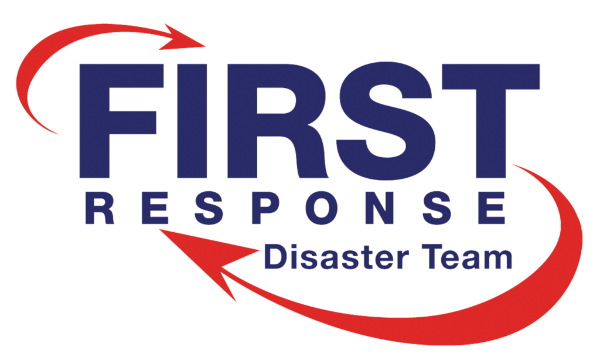How to Identify a Non-Freeze Pipe Burst: Signs That Demand Immediate Attention
While many homeowners associate pipe bursts with freezing winter temperatures, the truth is that pipes can fail during any season for various reasons. Recognizing the signs of a burst pipe early is crucial, as non-freeze pipe bursts can cause extensive damage to your home if not identified and addressed quickly.
We understand the urgency of catching these problems early at the First Response Disaster Team. We’ve compiled this guide to help you recognize the warning signs that demand immediate attention.
Understanding Non-Freeze Pipe Bursts
Not all pipe failures are created equal. While freezing temperatures cause water to expand and crack pipes during winter, non-freeze pipe bursts typically result from different factors.
These include aging infrastructure as pipes naturally deteriorate over time, excessive water pressure, corrosion and rust accumulation, poor initial installation, tree root intrusion, shifting soil or foundation movement, manufacturing defects, and clogging with subsequent pressure buildup.
Understanding these underlying causes can help you take preventive measures, but first, you need to recognize when a pipe has already burst.
Early Warning Signs of a Non-Freeze Pipe Burst
Catching a pipe burst in its early stages can save you thousands in repair costs and prevent structural damage to your home. Be alert to these subtle indicators:
1. Unusual Water Sounds
Pay attention to the sounds your home makes. While water noise is normal in any plumbing system, certain sounds can indicate trouble.
Hissing or whistling within walls, constant running water sounds when no fixtures are in use, banging or hammering in pipes (water hammer), and gurgling drains that persist after use are all acoustic clues that often appear before any visible signs of water damage and shouldn’t be ignored.
2. Fluctuations in Water Pressure
Have you noticed your shower suddenly losing pressure or your faucet sputtering? Unexplained changes in water pressure throughout your home can signal a compromised pipe. The pressure drops because water escapes somewhere in your system before reaching its intended destination.
3. Discolored Water
Clean water should be clear. If you notice brown, yellow, or rusty-colored water coming from your taps, this could indicate that your pipes are corroding from the inside. This corrosion weakens pipe walls and often precedes bursts.
4. Unexplained Increase in Water Bills
A sudden spike in your water bill without a corresponding increase in usage is a major red flag. This typically means water is escaping somewhere in your system—potentially from a small leak that will eventually develop into a full burst if left unaddressed.
Don’t wait for the situation to worsen. Call the First Response Disaster Team for 24/7 emergency response to pipe bursts and water damage. Our experts can be at your door within the hour to mitigate damage and begin restoration.
Visible Signs That Require Immediate Action
Once you notice any of these signs, you’re dealing with a situation that demands professional attention without delay:
1. Damp or Wet Spots
Water will always find the path of least resistance. When a pipe bursts, moisture often appears in unexpected places. Water stains on ceilings or walls (particularly if they grow over time), unexplained puddles on floors, damp drywall or baseboards, and warping or buckling of flooring materials are all telltale signs.
Remember that water can travel along beams and other structural elements, so the visible damage might not be directly above the burst pipe.
2. Mold and Mildew Growth
Mold can begin growing within 24-48 hours of water exposure. If you notice sudden mold growth, particularly in areas that typically stay dry, this strongly indicates hidden moisture—potentially from a burst pipe.
3. Unpleasant Odors
Water damage creates distinctive musty, earthy smells as materials begin to degrade and mold takes hold. If you notice these odors but can’t immediately identify visible water, there’s likely a hidden leak or burst pipe somewhere in your home.
4. Foundation Cracks or Shifting
When pipes burst near or under your foundation, the escaping water can erode soil and create voids. This undermining can lead to foundation movement, resulting in cracks in walls, uneven floors, or doors that suddenly don’t close properly.
Why Choose First Response Disaster Team?
When faced with water damage from a non-freeze pipe burst, you need more than just repairs—you need comprehensive restoration services from professionals who understand the full scope of potential damage.
Here’s why homeowners across the region trust the First Response Disaster Team:
Our expert team brings decades of combined experience to every restoration project, ensuring nothing is overlooked during the assessment and repair process. We employ cutting-edge moisture detection technology that can locate hidden water damage invisible to the naked eye, preventing future mold growth and structural issues.
Additionally, our restoration professionals are certified in water damage restoration and mold remediation, giving you confidence that all aspects of your home’s recovery are in capable hands.
Conclusion
Non-freeze pipe bursts can happen year-round and often provide subtle warning signs before catastrophic failure occurs. By familiarizing yourself with these indicators and taking prompt action, you can minimize damage to your home and possessions.
Remember that water damages compounds quickly—what might seem like a minor issue today can lead to major structural problems and mold infestation if not appropriately addressed.
At First Response Disaster Team, we’re committed to helping homeowners recover from water damage and prevent future incidents. Our experienced team is available 24/7 to respond to emergencies and provide the expertise to restore your home completely.
Don’t let a burst pipe disrupt your life—know the signs, take quick action, and trust professionals to handle the restoration process properly.

